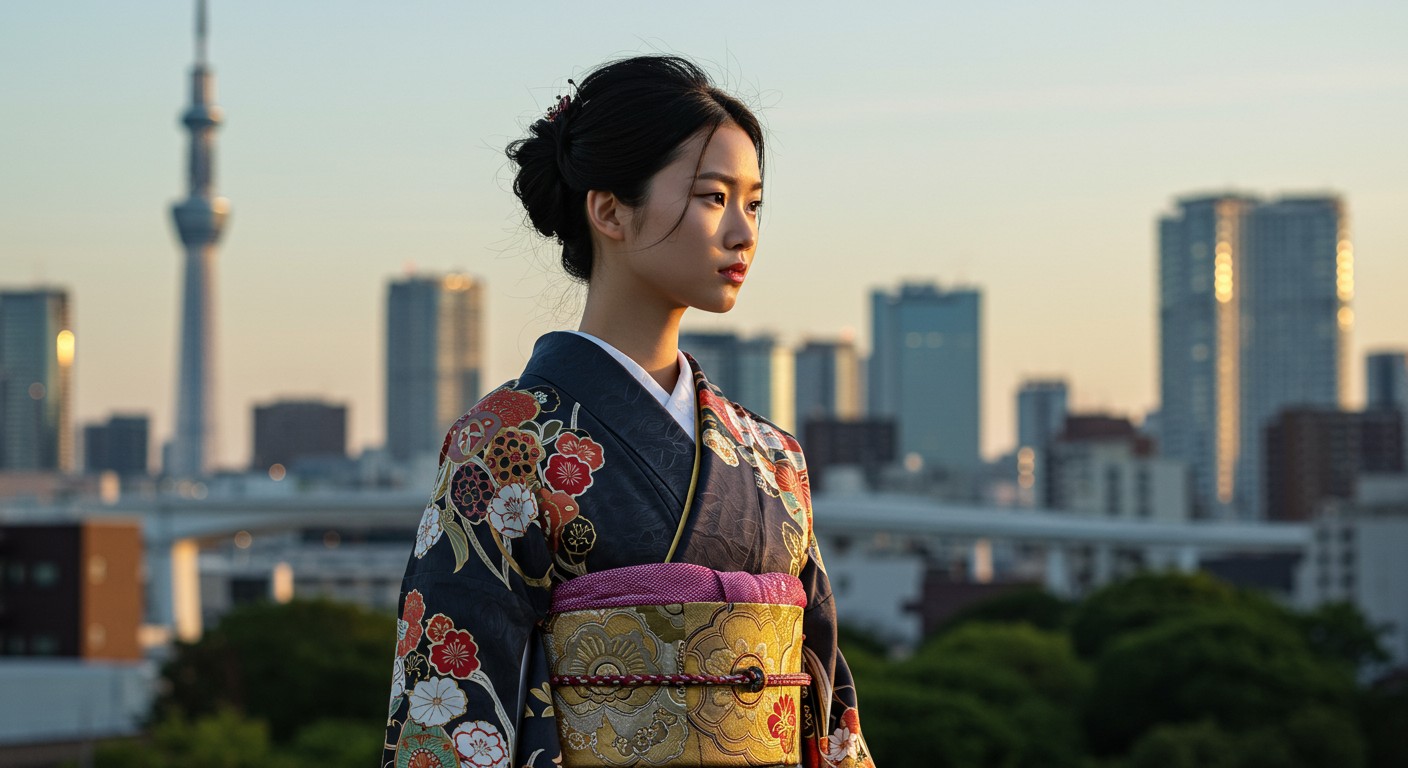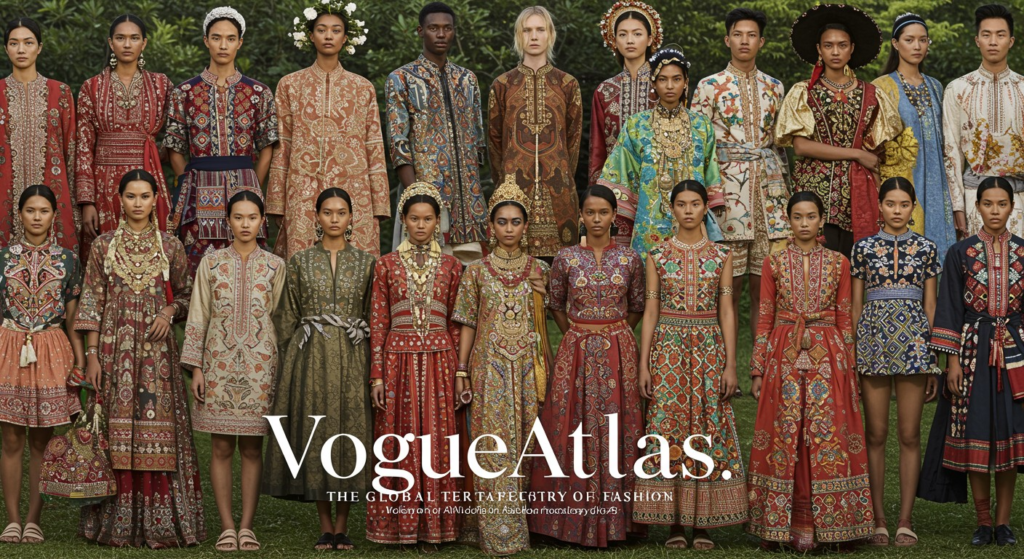In a globalized world, where borders become more and more pervasive, fashion offers an universal language that surpasses the place and celebrates diversity. VogueAtlas itself becomes a groundbreaking idea – a way to rove the globe with special attention on revealing fashion storylines, traditions and influences that touch the fabric of the world. This carefully curated fashion atlas is in fact showing not the clothes, but the stories of heritage, identity and creative expression across continents.
The Philosophy of VogueAtlas
VogueAtlas is built on the belief that fashion is personal and universal. It is a map of style that recognises the regional distinctiveness of clothes, and the cross-fertilisation of influences that has always driven the evolution of fashion. Vogue-Atlas promotes the sustainability of our sartorial history whilst championing modern day textile industries worldwide.
This philosophy extends beyond mere aesthetics to encompass the social, economic, and environmental dimensions of fashion. VogueAtlas champions ethical practices, sustainable production, and inclusive representation across its global map of style.
Eastern Elegance: Japan’s Timeless yet Evolving Fashion
Japan stands as a fascinating study in contrasts, where ancient traditions and futuristic innovations coexist in perfect harmony. The country’s fashion landscape mirrors this duality, with centuries-old garments finding new life through modern interpretation.

The kimono is still one of Japan’s most recognizable exports to the world of fashion. Now, and well removed from museums or holidays, today’s designers are reworking this historic garment with a modern slant. Hiromi Asai and modernists who design kimonos are making interpretations with atypical fabrics, stripped-down design and styling that fuses the aesthetics of East’s tradition and West’s modernity.
Beyond the kimono, Japan has bequeathed fashion worlds with revolutionary design concepts via creators such as Issey Miyake, Rei Kawakubo and Yohji Yamamoto, whose avant-garde visions exploded Western fashion norms in the ’80s and whose distinctive hand echoes around fashion houses and cities around the world today. The idea in their clothes — that they were spaces and environments rather than simply adornments for the body — remains a touchstone of fashion.
Japan’s contemporary street-fashion scenes, in areas like Harajuku, still function as some of the most colorful laboratories for tinkering with and discovering new fashion, as young people mix old things, new things, designer things, handmade things and cultural things to see what looks they can create (and, for fast-fashion chains like Uniqlo and H&M, what fashions they can copy) that often get copied at least two years before they turn up in central London.
African Renaissance: The Continent’s Fashion Revolution
The story of fashion in Africa is experiencing a seismic shift, as homegrown designers across the continent and its diaspora continue to reclaim their roots and meld them with a modern sense of global grace. The continent’s 54 countries boast an unparalleled diversity of textile traditions, craft techniques,and aesthetic sensibilities that are now finding their rightful place on the world stage.

Ankara/ (Dutch wax prints)/ industrial batik/ and the various other names by which it is known, has a quietly complicated narrative, and history of interaction between west Africa, Europe and Indonesia, as that most infamous of fashion historians weaves his tangled web. Today, designers as diverse as Nigeria’s Lisa Folawiyo and Italy-Haiti’s Stella Jean turn the cheerful capabilities of these prints into shapes that are resolutely modern and that represent both African identification and global style.
South Africa’s fashion industry draws together a mix of multicultural aesthetics via designers such as Thebe Magugu, whose work explores social issues while showcasing impeccable tailoring and innovative textiles. Meanwhile, Morocco’s rich tradition of craftsmanship is being celebrated by brands like Marrakshi Life, which combines traditional weaving techniques with contemporary designs.
The rise of fashion weeks in Lagos, Dakar, Johannesburg and other major African cities has offered these talents platforms to share their work, and digital marketplaces like The Folklore connect African designers with customers around the world. That infrastructure itself, combined with the rise of international figures, suggests that Africa’s moment in global fashion is not on the way; it has arrived.
Nordic Minimalism: Scandinavian Sustainable Style
The Scandi areas have generated a design style that has quickly become known the world over: clean lines, simple function, and a color scheme of neutrals punctuated by occasional bursts of color. This design philosophy extends seamlessly to fashion, where practicality meets understated elegance.

Brands like Acne Studios, Ganni, and Filippa K have brought Scandinavian fashion sensibilities to global audiences, demonstrating that “minimalist” need not mean boring or uniform. Instead, this approach focuses on quality materials, expert craftsmanship, and timeless design that transcends seasonal trends—creating pieces intended to remain in wardrobes for years rather than months.
Perhaps most significantly, Scandinavian fashion has been at the forefront of the industry’s sustainability movement. Long before environmental consciousness became fashionable, Nordic brands were pioneering transparent supply chains, ethical manufacturing processes, and innovative materials. Stockholm Fashion Week famously canceled a season in 2019 to focus on sustainability initiatives, signaling the region’s commitment to reimagining fashion’s environmental impact.
The concept of “hygge”—the Danish notion of coziness and comfortable conviviality—influences Scandinavian fashion’s emphasis on comfort without sacrificing style. Oversized knitwear, layering pieces, and functional outerwear reflect both the region’s climate needs and its cultural values of practicality and well-being.
The Latin American Vibrance: Color, Craft, and Cultural Pride
Latin America’s fashion landscape beats with a vivacious mix of color, craftsmanship and cultural history. From Mexico to Argentina, designers are reviving traditional techniques and celebrating them within contemporary contexts.
Mexico’s rich textile heritage — Oaxacan embroidery and Chiapas weaving, most recognizable — has provided inspiration for local designers like Carla Fernández, who works directly with artisan communities here, and international houses, like Dior, which has received backlash for appropriating rather than collaborating. This tension underscores the need for ethical collaborations thatproperly credit and compensate the cultural originators of these techniques.
That architectural eye is also evident in the look and feel of the labels now bringing Latin flair to the fashion world: the designers behind these houses have never shied away from drama—with explosions of ruffles, popping patterns and bold silhouettes, they’ve all reinterpreted classic, ultrafeminine elements with nods to the region’s cultural appeal. In the world of fashion, Brazil’s face is as multicultural as its identity – São Paulo Fashion Week is one of the most important fashion events in the world.
Throughout the region, a new generation of designers is using fashion to engage with social and environmental issues. Some brands pioneering sustainable materials include Osklen in Brazil, while others invest in. preserving traditional crafts by creating contemporary applications and markets for these skills.
The Future of VogueAtlas: Fashion Without Borders
As we look toward fashion’s future, VogueAtlas represents more than a catalog of global styles—it offers a framework for understanding how dress functions as both cultural preservation and cross-cultural communication. In an increasingly interconnected world, fashion’s most exciting developments often emerge at the intersections where traditions meet innovations, where East meets West, where artisanal craftsmanship meets technological advancement.
Digital technology is transforming how we experience this global fashion landscape. Virtual fashion shows make once-exclusive events accessible worldwide, while social media platforms allow trends to disseminate across borders at unprecedented speed. Artificial intelligence and virtual reality are creating new possibilities for fashion design, presentation, and consumption that may soon render geographic location increasingly irrelevant.
Yet paradoxically, as fashion becomes more global, consumers increasingly value authenticity and provenance. The stories behind garments—who made them, under what conditions, and with what cultural significance—matter more than ever. VogueAtlas celebrates this tension between globalization and localization, seeing it not as a contradiction but as the creative dynamic that will propel fashion forward.
The fashion atlas of tomorrow will likely be defined by greater sustainability, inclusivity, and technological integration. Brands that successfully navigate this landscape will be those that honor cultural heritage while embracing innovation, that recognize the value of diversity not just in their marketing but in their design rooms and executive suites, and that commit to environmental stewardship as a core business practice rather than a peripheral concern.
As consumers, creators, and citizens of this interconnected world, we all contribute to this evolving global tapestry of style. VogueAtlas invites us to approach fashion not just as something we wear, but as a powerful medium through which we can celebrate cultural diversity, express individual identity, and imagine more beautiful and sustainable futures.
Through this journey across continents and cultures, VogueAtlas reminds us that fashion is far more than frivolity—it’s a universal language through which we express identity, preserve heritage, and create community. As global citizens, we have unprecedented access to this rich diversity of style traditions. The challenge and opportunity before us is to appreciate and draw inspiration from this fashion atlas while respecting the cultural contexts from which these aesthetics emerge, supporting ethical practices, and contributing to a more sustainable and inclusive industry.
You can also visit our other blogs here : luxira.in



